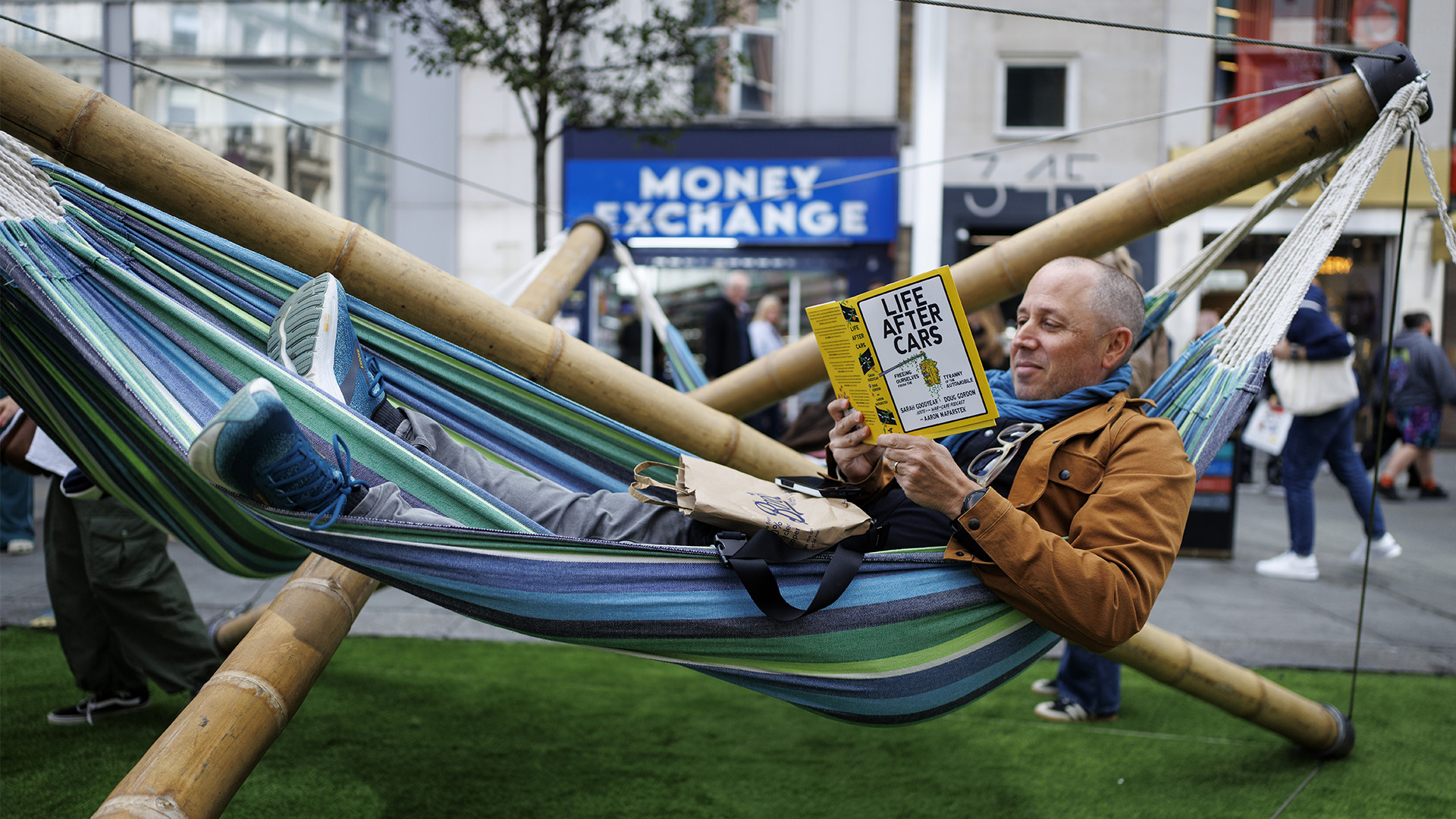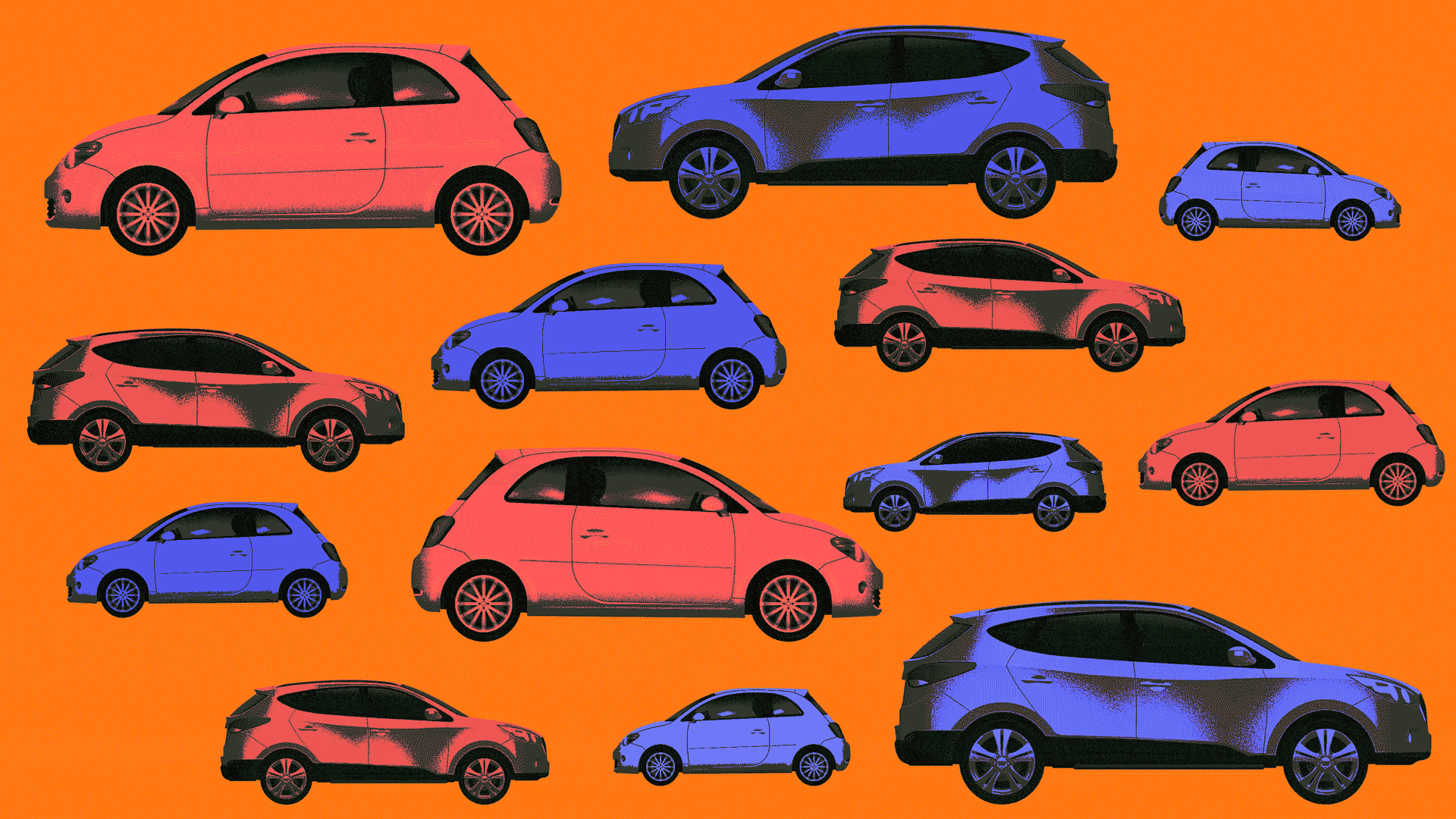
Vuk Valcic/ZUMA Press Wire/Shutterstock
It’s early evening on a Friday in August and Oxford Street in central London is clogged with crowds.
Buses queue, taxis rev their engines impatiently and, along the pavements, shoppers meander between shop windows and into the road, apparently oblivious to each other and the traffic – although it is largely at a standstill.
Oxford Street is often described in superlatives: London’s “most iconic” high street, Europe’s “biggest shopping street” and so on. But, on this evidence, no one is really enjoying themselves there. It feels too crowded, too disorganised and – at some of the larger junctions near the tube stations that serve it – borderline dangerous.
Pedestrians ignore crossings and saunter in front of oncoming Lime bikes. A bus driver shakes his head in despair as he creeps towards Bond Street. It is exhausting trying to navigate even short stretches of the road, which stretches more than a mile from east to west. Does anyone enjoy coming here?
Visitor numbers have picked up but have yet to reach their pre-pandemic levels and the street feels as if it is in decline. As internet shopping has hollowed out the high street, even Oxford Street’s offering seems to have become scrappier: empty units have hosted tacky souvenir and vape shops, as well as American candy stores (which many suspect are a front for illegal activities).
The street has lost several department stores and flagship premises that made it attractive and, in 2021, the government ended a policy that allowed overseas visitors to claim back 20% VAT on goods, leading to a decline in tourists looking for high-end splurges.
Given its status, something had to be done to revive Oxford Street’s fortunes and, earlier this year, the Mayor of London Sadiq Khan, launched a plan to pedestrianise one half of the thoroughfare. The plan would close it even to buses and taxis, although private vehicles have been banned from 7am to 7pm for many years.
The aim is for the section from Oxford Circus travelling west to Orchard Street to be closed to traffic completely from early 2026. This stretch includes some of its most desirable shops such as Selfridge’s, John Lewis, the enormous Zara shop, and music store HMV which has re-reopened.

TOLGA AKMEN/EPA/Shutterstock
A preview of pedestrianisation
On a Sunday in September, the mayor’s office closes Oxford Street, west of Oxford Circus, to all traffic for the day.
The carriageway is covered with brightly coloured decals, there are food trucks, picnic areas, a hammock station, and all manner of entertainments: a DJ stage, an NBA event, a baseball batting cage, a drumming arena with beanbags and deckchairs for spectators as well as the obligatory face-painting and storytelling tents.
Shops make the most of it and run promotions on the pavements outside their premises. The sun shines and the crowds come out to play. When pedestrianisation happens, no one promises it will be like this every day but, for once, it looks as if the visitors are enjoying themselves.
Rejuvenating the nation’s high street
In an announcement, Khan acknowledged that “Oxford Street has suffered over many years, so urgent action is needed to give our nation’s high street a new lease of life.
“We want to rejuvenate Oxford Street; establish it as a global leader for shopping, leisure and outdoor events with a world-class, accessible, pedestrianised avenue,” he went on to say. “This will help to attract more international visitors, and act as a magnet for new investment and job creation, driving growth and economic prosperity for decades to come.”
The announcement took the local authority, Westminster, somewhat by surprise. It had been developing its own plans for Oxford Street which didn’t involve pedestrianisation when the mayor, in something of a land grab, was able to wrangle control of the carriageway. There was talk of a legal battle before the local authority backed down and a subsequent consultation by the mayor’s office found 66% of respondents were in favour of the plans for pedestrianisation.
“It’s a massive investment but, if they do it right, it will bring in people,” says Louise Barth MRICS of Barth Consulting. “But it needs to offer more [than just pedestrianisation]. It has to have places to sit down, have toilet facilities, and be nice to look at. It needs to feel safe.”
She cites the redevelopment of the ex-industrial area around north London’s Kings Cross station as an example of getting things right. The once-grimy hinterland is now a sparkling destination with plazas, wide pedestrian avenues and regular events that bring people there. But creating such a destination is a tough ask.
“People are used to shopping in purpose-built environments,” says Tony Mulhall MRICS, senior specialist, land & resources at RICS. “The idea that you’re shopping in competition with buses, taxis and bikes – you can see that you need to rebalance that.”
“It really brings into focus the shopping experience… there has to be a vindication of the decision to go” Tony Mulhall MRICS, RICS
Competing with shopping centres
The growth of shopping centres and malls has fundamentally altered the way that we shop, turning what was an activity based on utility into one based on recreation. Shoppers are able to drive to a mall, park up, and wander in a contained environment, with no consideration of traffic or weather. Rather than struggling home on public transport from a city centre, they can load their shopping into their cars and depart at their convenience.
“Alfred Taubman, one of the original shopping mall developers, said that his idea was to keep shoppers there all day long,” says Mulhall. To tempt people back from the city periphery, where Taubman and his ilk built their kingdoms, city centres have to offer something very special and that is as much about estate management as transportation goals.
The large London estates, which have a singleness of purpose due to their unique ownership, are able to be extremely selective about tenancies and can curate a specific mix for their retail area. The Cadogan Estate has encouraged younger entrepreneurs through pop-ups on King’s Road and created an idealised high street on Pavilion Road, tucked behind Sloane Street. Likewise, the de Walden estate, says Mulhall, has revamped nearby Marylebone High Street by reducing traffic and encouraging boutique- shops. Oxford Street, which is both larger and has a more patchwork pattern of ownership, is much more of a challenge.
“It really brings into focus the shopping experience,” says Mulhall. “Why do people go into the centre when they can go online? There has to be something about the immediacy, a vindication of the decision to go. It’s about the quality of being in these places and what is on offer there.”
Will people-first urban planning convince shoppers to make the trip into central London and retailers to invest in prime commercial real estate? Only time will tell.


